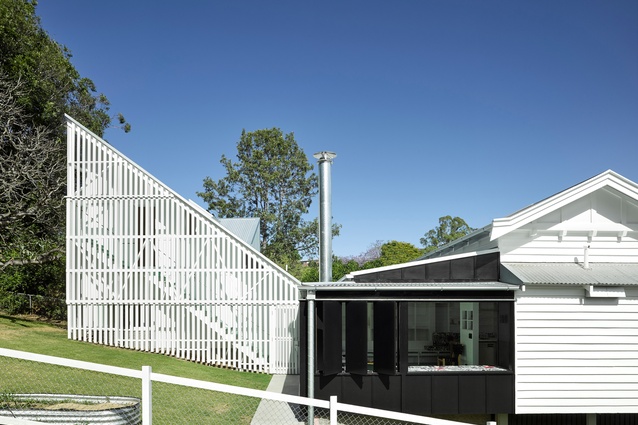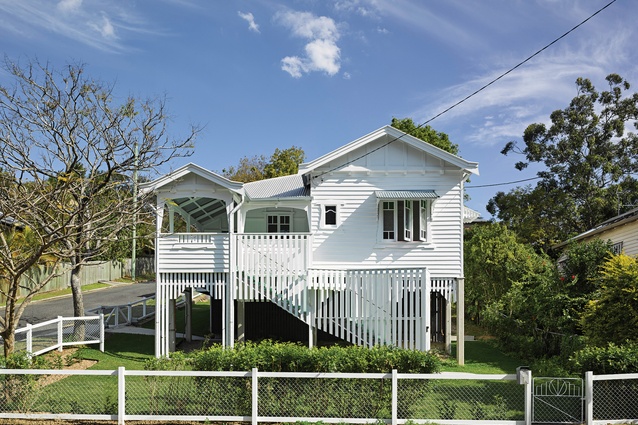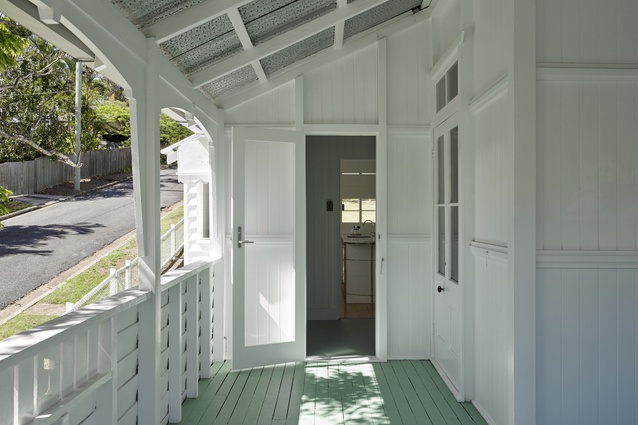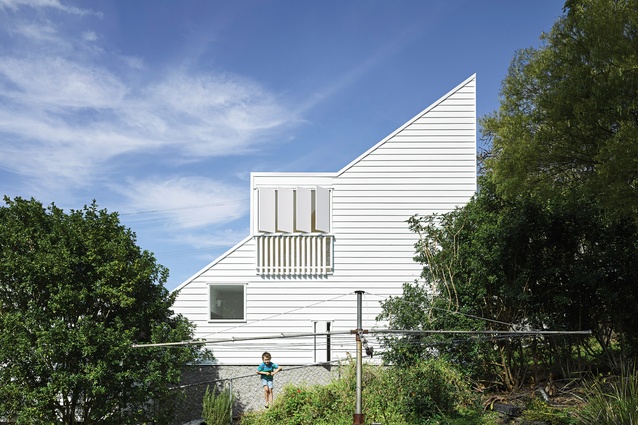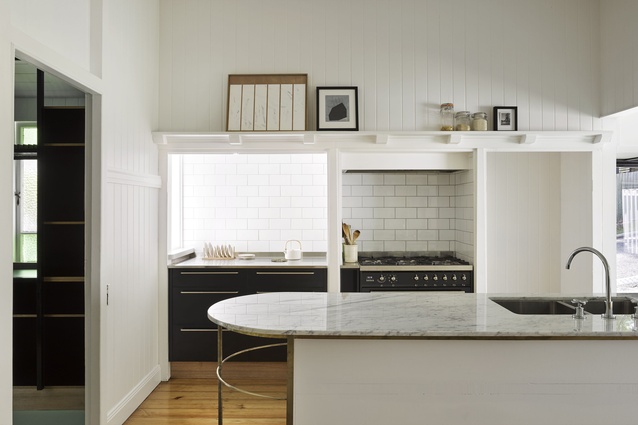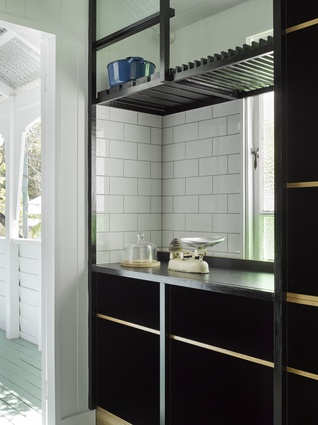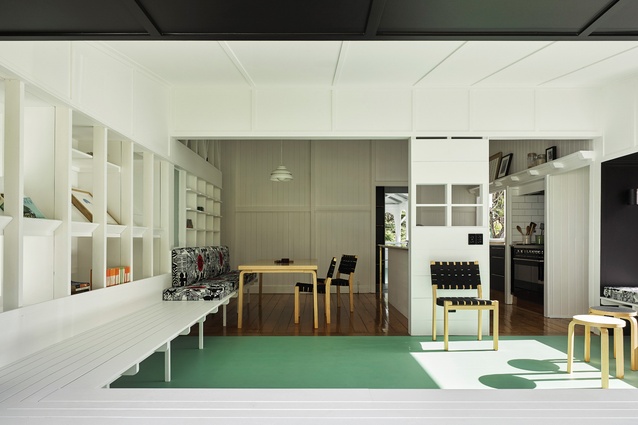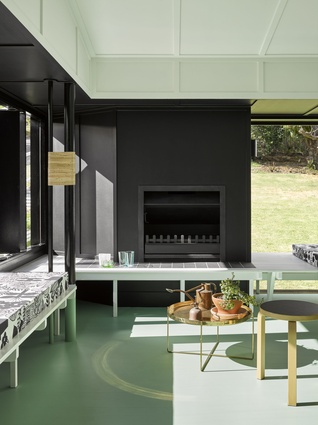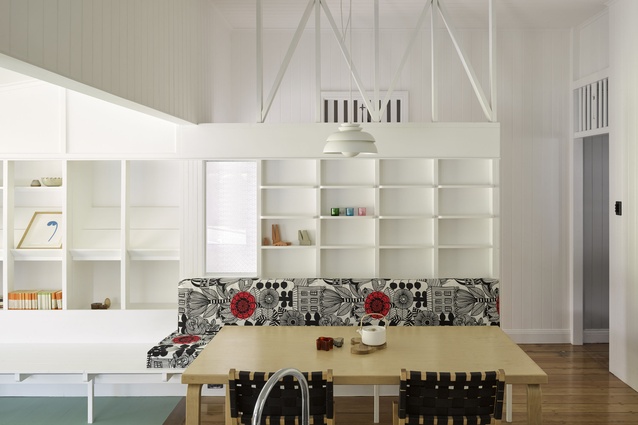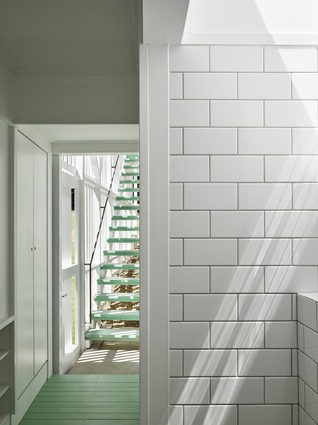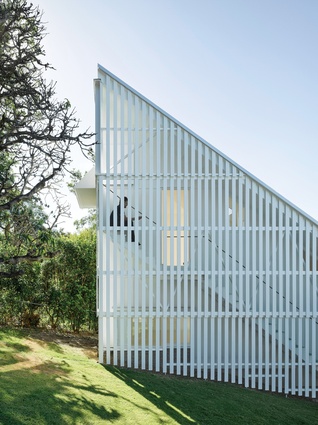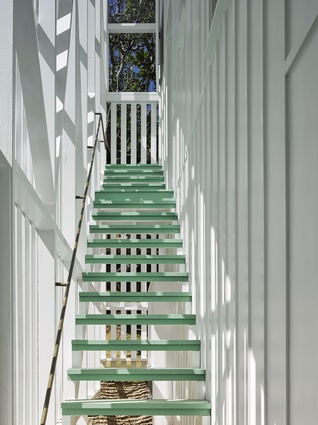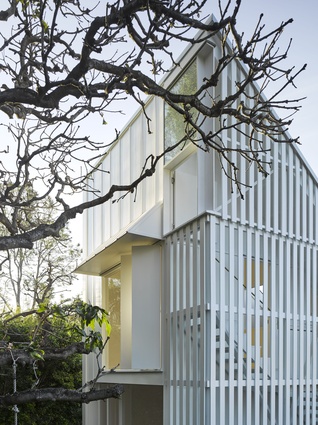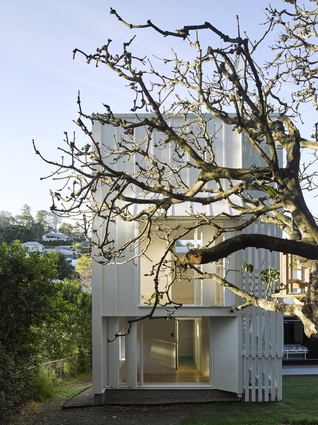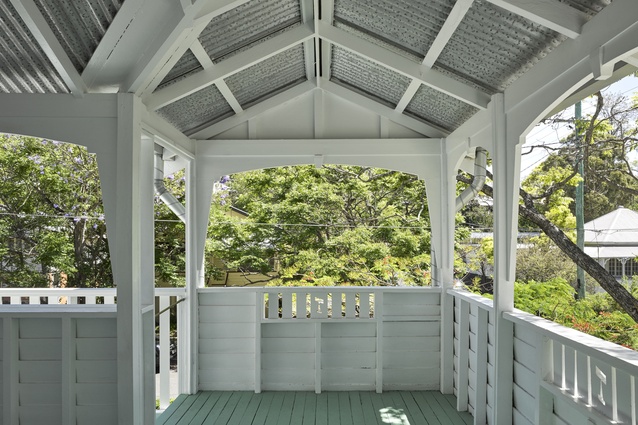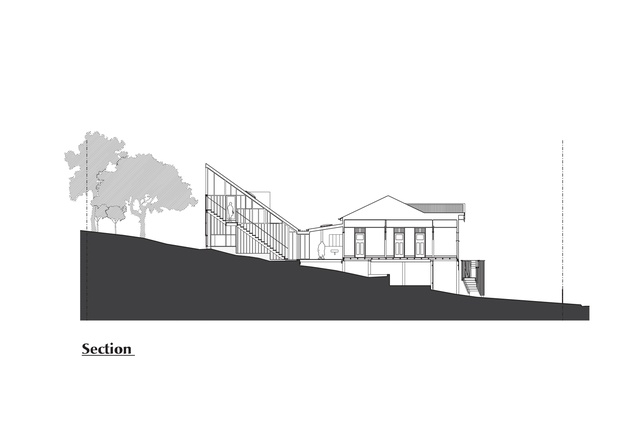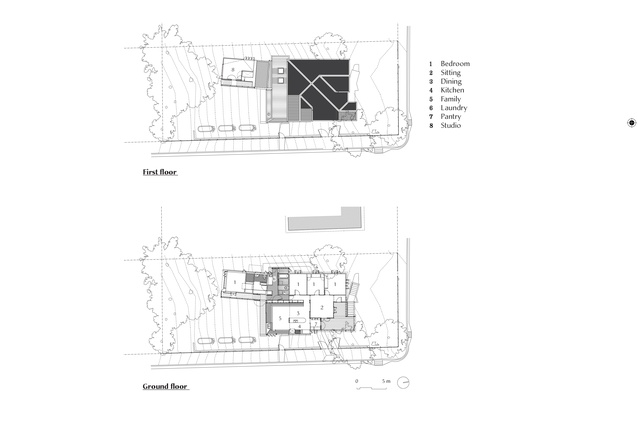Quiet achiever: Auchenflower House
Carefully attuned to its site, this alteration and addition to an inter-war Queenslander by Vokes and Peters is about "making minimum disturbance while achieving maximum impact."
Few architects approach the process of design with such forensic dedication to the task of analysis as Brisbane practice Vokes and Peters. Its latest residential project, Auchenflower House, explores the curiosities of an inter-war Queenslander and abstracts these to devise a series of clever changes aimed at preserving, augmenting and extending the original.
The project can be distilled as a study of two staircases – front and back – bookending new pathways and rooms threaded through and extruded from the 1930s timber house. The front staircase resurrects a previously demolished entry sequence in a restorative gesture that resolves contemporary detailing within a traditional high-railed stair enclosure.
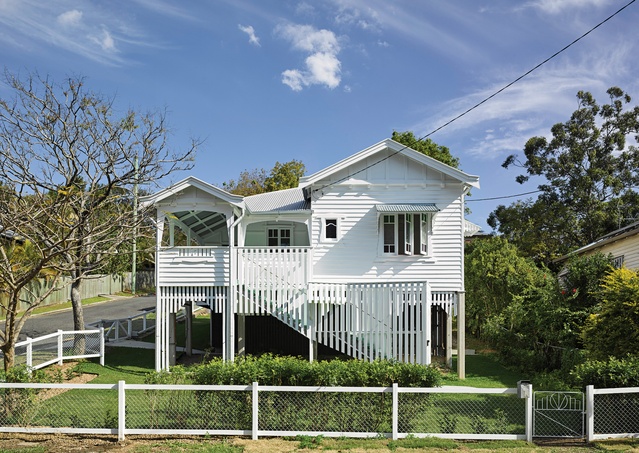
At the back, another new staircase explores an under-celebrated phenomenon of the Queenslander, the “defended outdoor stair,” borrowing a traditional tectonic order as enclosure and establishing access to a new two-storey, semidetached dormitory and studio.
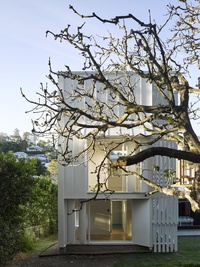
New pathways made within the house, connecting front and back staircases, establish movement patterns that encourage occupants to engage more directly with the outdoors. The planning of public rooms follows the “natural bias” identified in the original dwelling and the side of the building considered most desirable by virtue of site and climate.
In this instance, it’s the long edge running parallel to the side street, capturing an optimal north-eastern orientation. The living spaces saturated on this side of the house enjoy a blissful light quality and excellent airflow, granting the inhabitants the opportunity to participate in the life of the season and neighbourhood.
A new room made below an extension of the rear lean-to contributes to the augmentation and extension of the eastern side of the building, allowing the kitchen to engage with a large, informal space dedicated to dining, studying, gathering and playing. Smaller, more intimate spaces are defined within the generous footprint. As the perimeter bench seat bends around three sides of the room, the corresponding backdrop changes like a revolving stage set.
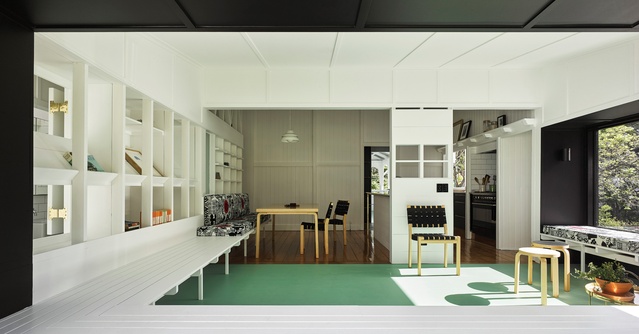
A triptych of domestic scenery is captured: to the west, a wall of timber shelves designed to display collectables and ceramics, to the south, a duckboard from which young legs can dangle over the garden path and to the east, a window seat positioned to frame the “spectacle of the suburb awakening.”
The hearth and fireplace bring focus to a corner nook and secure a space that indulges in ideas about experience intensified through colour and material exploration. Casting the corner in shadow are the ink-black surfaces employed to amplify a sense of compression within and around deep window recesses.
Shadowy hues are applied to casement windows too, in a gesture that celebrates the “pleasure of absolutes” – the opposing conditions of open and shut, black and white. Polished blue tiles and rattan-wrapped columns engage the senses, connecting fingertips directly with building fabric. Timber floorboards, painted jade green, announce this part of the room as belonging to the exterior realm.
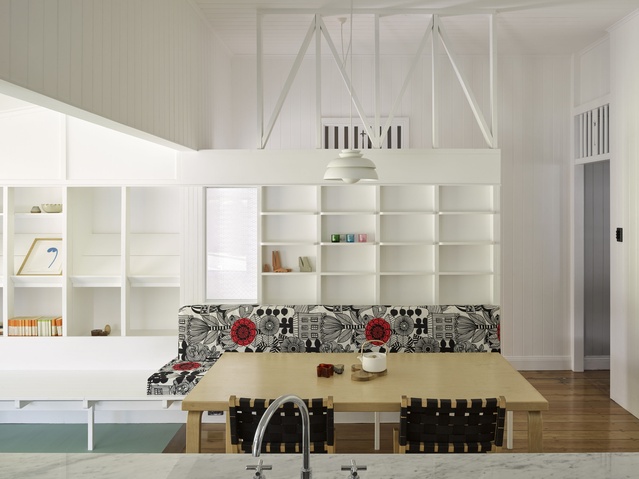
As the sun sets, occupation switches from the eastern to the western side of the building as children retire to bedrooms within the old house and adults retreat to the new semidetached structure extending along the western boundary. The new extension is a fascinating piece of architecture, overtly contemporary yet with discernible vernacular tendencies.
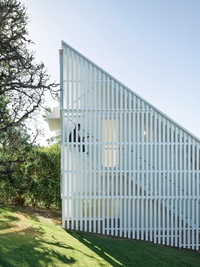
The staircase enclosure of the eastern facade, which establishes the steeply pitched triangular form of the building, is an abstraction of the secured route traditionally made to connect kitchen upstairs to laundry downstairs. The sheltered route made here connects the garden level and studio while allowing occupants to circulate outdoors and engage with the hubbub of the street and scent of the mango tree.
The vertical rhythm of white “gappy battens” adopts the width and spacing established by the 1930s cottage to cleverly marry a vernacular and contemporary expression. The triangular form establishes a dialogue with the steep slope of the land as well as the distant hillside.
Vokes and Peters could easily have entertained a more sober, rectilinear box but consideration for the visual impact of the structure from across the gully was an important consideration. Stuart points out that the steep pitch ensures vistas from the side street through the site and across to the opposite hill are preserved.
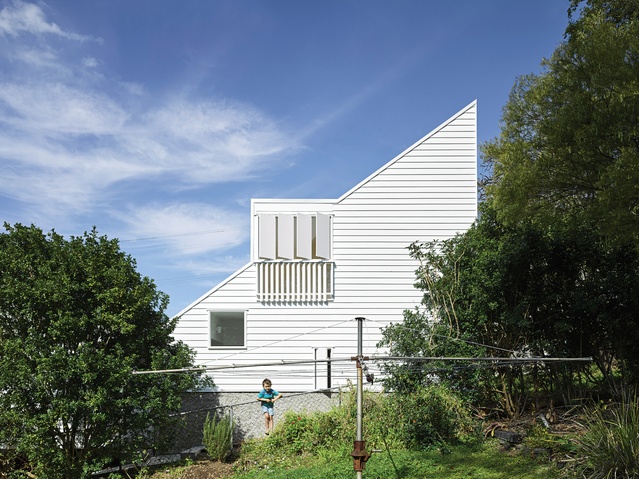
Vokes and Peters believe the biggest complement you could bestow upon Auchenflower House is to drive past it without giving it a second glance. Such a sentiment epitomizes an approach to architecture that centres on making minimum disturbance while achieving maximum impact.
Spatial complexity and experiential interest are bestowed upon the occupants while garden, sightlines and streetscape are ceremoniously delivered back to the neighbourhood. Through such considered and cordial gestures, this humble project demonstrates how sensitively and at once, assuredly, a contribution can be made to architecture and the suburban landscape.
Auchenflower House was named as the Australian House of the Year at the 2017 Houses Awards. This article was first published on ArchitectureAU.com.

